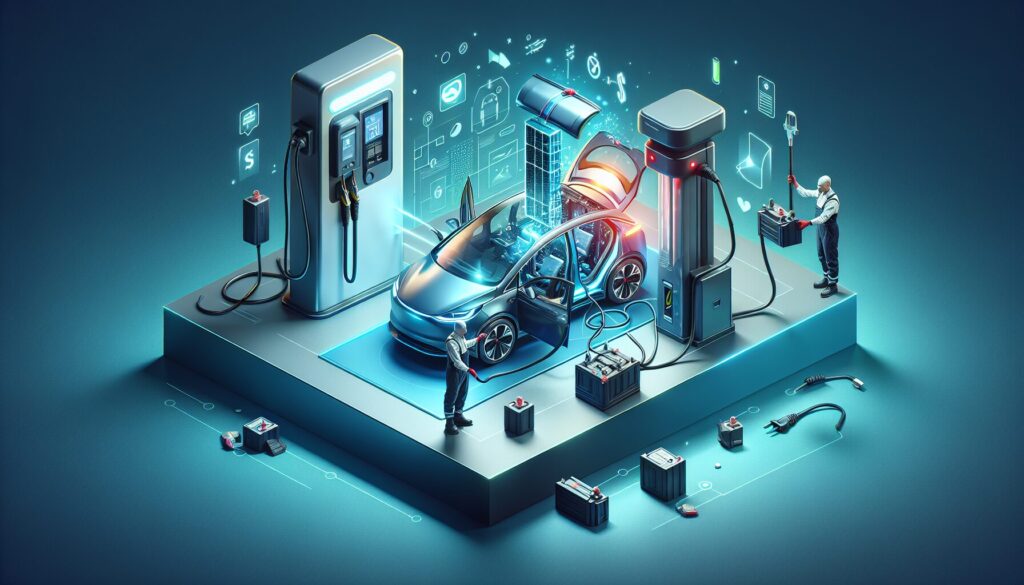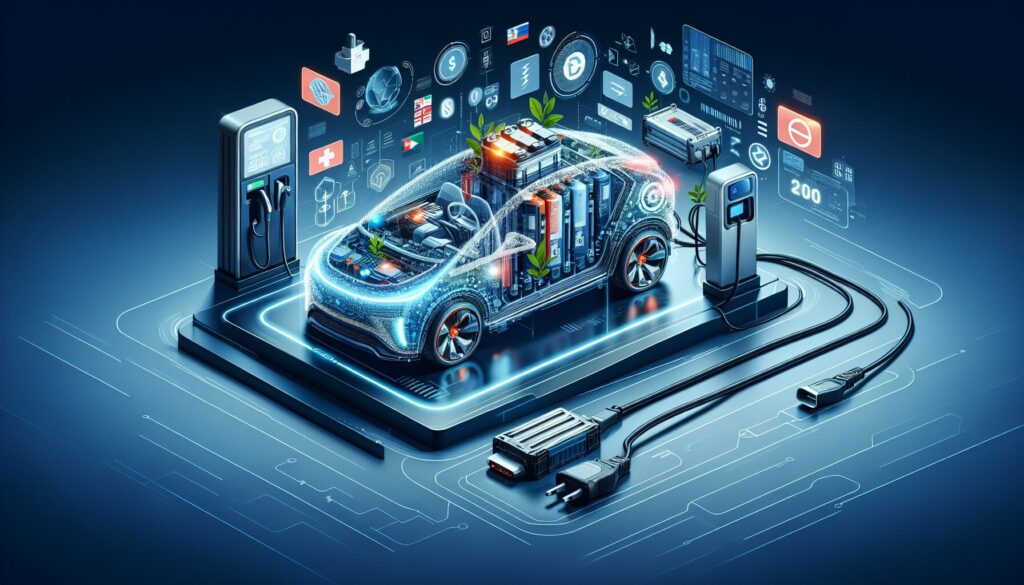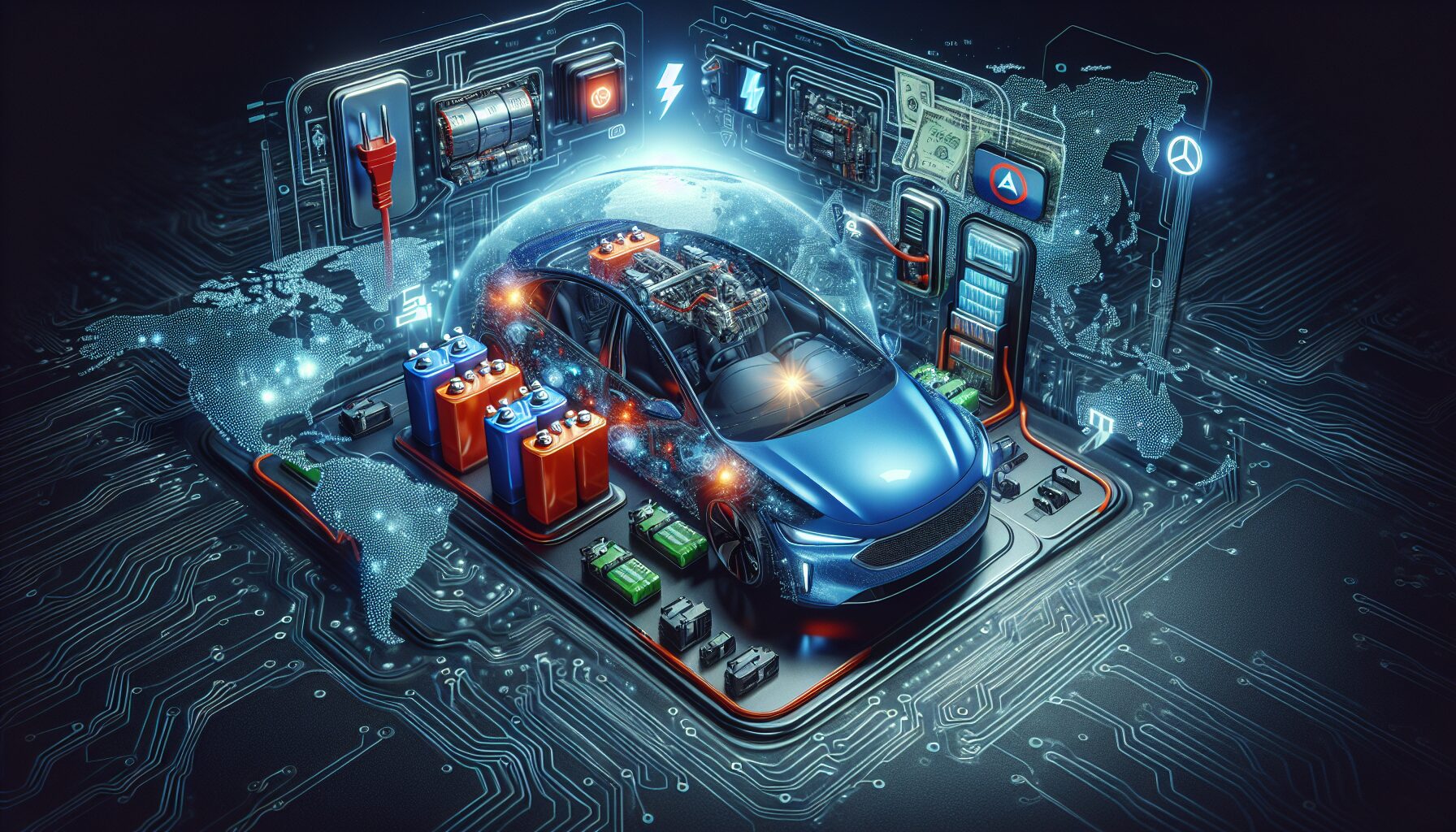Imagine cruising along the Great Ocean Road in your electric car, the salty sea breeze on your face, when suddenly, your battery’s getting low. Instead of waiting hours to recharge, you simply swap it out. Electric car battery swapping is becoming a hot topic here in Australia. It’s a game-changer for reducing downtime. I once chatted with an engineer who explained how the Battery Management System (BMS) ensures each battery’s health. It monitors temperature, voltage, and current, optimizing performance. Solid-state electrolytes are also on the rise, offering better thermal management and safety. Companies like NIO are leading the charge with this tech. They’re making it as easy as pulling into a station and swapping out a battery in minutes. The potential to transform our driving experience is pretty exciting. It opens up a world of possibilities for electric vehicle adoption Down Under.
How Battery Swapping Works
Imagine cruising down the Great Ocean Road in your electric vehicle, knowing you won’t have to stop for hours to charge. That’s the magic of electric vehicle battery swapping! One sunny afternoon, while enjoying a coffee at a beachside café, I overheard a fascinating conversation about this technology. These folks were talking about how automated guided vehicles (AGVs) are used in battery swapping stations. These nifty machines can quickly and safely swap out your car’s battery. They’re designed with high-voltage safety protocols in mind, so you can rest easy knowing your vehicle is in good hands.
Battery swapping works almost like a pit stop in a car race. You drive into a station, and within minutes, your depleted battery is replaced with a fully charged one. This isn’t just about convenience; it’s a game-changer for long-distance driving across Australia. I once met an engineer at a tech expo, and he shared how the battery management system (BMS) algorithms are crucial. These algorithms ensure that the swapped battery is compatible and performs optimally with your vehicle’s systems. It’s like having a personal tech guru inside your car!
The Process of Battery Swapping
When you pull into a battery swapping station, the process is seamless. You don’t even need to leave your car. The AGVs handle everything, guided by advanced sensors and computer systems. They gently lift your vehicle to access the battery compartment. Then, they remove the old battery and slide in a new one. It’s all done with precision and care. This technology is becoming more popular with companies like NIO and Ample leading the way. They’re setting up networks of these stations to make electric driving more accessible.
Battery swapping also offers environmental benefits. By reusing and recycling battery components, we can reduce waste and the need for raw materials. Plus, it allows for better battery management. Swapping stations can monitor and maintain batteries more effectively than individual users. This extends the lifespan of each battery, making electric vehicles even more sustainable.
Next time you’re planning a road trip, consider the convenience and efficiency of battery swapping. It’s an exciting development in the world of electric cars, and it’s only going to get better from here. Imagine the freedom of the open road without the worry of lengthy charging stops. That’s something to look forward to on your next adventure!
Benefits of Battery Swapping for Electric Vehicles

Picture this: You’re cruising along the Great Ocean Road, that stunning stretch of road that hugs the coastline, the wind in your hair and the ocean by your side. Suddenly, your electric vehicle’s Battery Management System (BMS) alerts you to a low battery. But instead of worrying, you pull into a battery swapping station. In minutes, you’ve got a fully charged battery and you’re back on the road. That’s the magic of battery swapping technology!
One of the most exciting aspects of battery swapping is the convenience it brings. Imagine no longer having to wait for your car to charge. With DC fast charging being limited by the time it takes to juice up, swapping out your battery is a total game-changer. It’s like the pit stops in car races but for your everyday drive. This means less downtime and more time enjoying your journey.
Now, let me take you back to a chat I had with a fellow electric vehicle enthusiast at a local meet-up here in Australia. We were talking about the types of batteries, and he was raving about lithium iron phosphate (LFP) cells. LFPs are known for their excellent thermal stability and safety. He mentioned how battery swapping stations often stock these robust batteries, ensuring reliability and peace of mind for users. With LFP batteries, you can drive with confidence, knowing that the technology backing you up is top-notch.
Environmental and Economical Benefits
Additionally, battery swapping presents an opportunity to reduce environmental impact. The centralized nature of swapping stations allows them to manage battery recycling more efficiently. This could lead to a decrease in the overall carbon footprint of electric vehicles. According to Climate Council, electric vehicles are a pivotal part of reducing emissions in Australia.
Of course, it’s not just about the environment. The economic benefits are significant too. By separating the ownership of the car from the battery, costs can be lowered. This model might make electric vehicles more affordable for many. Companies like NIO are already pioneering this approach, making waves in the automotive industry.
Furthermore, automated guided vehicles play a crucial role in the efficiency of battery swapping stations. They streamline the process, ensuring that you’re back on the road in no time. No more waiting around for hours; just a quick swap and you’re set. This technology not only enhances the user experience but also maximizes the station’s throughput, serving more customers efficiently.
Challenges and Limitations of Battery Swapping

Picture this: it’s a sunny Saturday morning in Melbourne, and I’m grabbing a coffee with a mate who’s just bought an electric car. We’re chatting about all things electric, and naturally, the conversation drifts to the idea of swapping out car batteries rather than charging them. It’s an exciting concept, but as with anything new, there are challenges. One of the biggies is the cost of setting up automated battery swapping stations. These aren’t just simple plug-and-play units. They require sophisticated systems that handle both the mechanics and electronics of battery replacement. Plus, they need to integrate seamlessly with the car’s Battery Management System (BMS) to ensure everything works perfectly.
Another hurdle is the standardization of battery packs. Imagine trying to fit a square peg in a round hole. That’s what it’s like when battery packs vary in shape, size, and capacity between different car manufacturers. Standardizing these packs is crucial, but it’s no small feat with the myriad of electric vehicle brands out there. I remember seeing a NIO station in action, and it’s a marvel of engineering. However, it highlights the need for industry-wide cooperation to make battery swapping more widespread.
Infrastructure and Technology Challenges
Let’s not forget the technological challenges. Solid-state electrolytes, while promising, are still in the research phase for many companies. The transition from lithium-ion to solid-state batteries could drastically impact the feasibility of battery swapping. Each type of battery needs specific handling and management protocols. This is where the magic of the Battery Management System (BMS) comes into play again. It ensures that whether you’re using old-school lithium-ion or cutting-edge solid-state, your car’s battery performs optimally. But developing a BMS that can handle both seamlessly adds another layer of complexity.
Then there’s the issue of infrastructure. In a vast country like Australia, setting up enough stations to make battery swapping convenient is a massive undertaking. It’s not just about installing a station in every major city. Rural and remote areas need attention too. After all, what’s the point of an electric car if you’re worried about running out of juice on the Great Ocean Road? Here, the role of organizations like the Climate Council becomes essential. They advocate for policies that could support the development of such infrastructure, ensuring a cleaner and more sustainable transport future for Australia.
Current Market and Key Players in Battery Swapping

Australia’s buzzing with excitement over electric vehicle battery swapping! Diving into this space feels like stepping into the future. Picture this: a sleek electric car rolls into a swap station. In less time than it takes to grab a coffee, it’s ready to hit the road again with a fresh battery. It’s like magic, but with some seriously cool tech under the hood.
Let’s chat about one of the big players making waves in this market: NIO. This company has been pioneering battery swapping technology, particularly in China, and it’s fascinating to see their progress. Their swap stations are a marvel of engineering, using automated guided vehicle (AGV) technology to make the process seamless and efficient. It’s like watching a well-choreographed dance between technology and electric vehicles.
While NIO is a giant in the field, other companies aren’t far behind. In fact, what I love about this industry is its dynamism and the competition that spurs ongoing innovation. Climate Council has emphasized the importance of such technologies in reducing our carbon footprint, especially in a country like Australia where the vast distances make battery efficiency crucial.
Exciting Players in the Field
Beyond the big names, local startups are also entering the scene with innovative ideas. They’re often focused on adapting the technology to suit the unique Australian landscape. Imagine driving along the Great Ocean Road with the peace of mind that a quick battery swap is always an option. It’s not just about convenience; it’s about making electric vehicles a viable choice for long road trips.
I’ve had conversations with engineers who are focusing on enhancing the Battery Management System (BMS) involved in these swaps. They talk passionately about State of Charge (SoC) estimation algorithms, which ensure that batteries are swapped at the optimal time for maximum efficiency. It’s this kind of dedication and expertise that makes me optimistic about the future of electric car technology in Australia.
In a nutshell, the market for battery swapping is evolving rapidly. While we see major players setting the pace, emerging companies are adding their unique touch. It’s this blend of innovation, competition, and technical know-how that’s driving the future of electric mobility down under.
Future Prospects of Battery Swapping Technology
Imagine cruising along the Great Ocean Road in an electric vehicle, the wind in your hair and the sun setting over the horizon. You’re not worried about battery life because you know a quick stop at a battery swapping station will have you back on the road in no time. That’s the kind of future battery swapping technology could bring to Australia. With the growing demand for electric vehicles, this technology is not just a dream—it’s a promising reality.
One sunny afternoon, I found myself at a tech seminar in Melbourne, sipping on a flat white. The conversation veered towards electric cars, and I was fascinated by the potential of swappable battery modules. These modules are designed to be exchanged swiftly, minimizing downtime and maximizing convenience. Battery Management Systems (BMS) play a critical role here. They ensure each battery is monitored for health and performance, which is crucial for safety and efficiency.
Moreover, battery swapping stations are evolving with the State of Charge (SoC) algorithms. These algorithms help determine the optimal time for a swap. They analyze the current charge and predict future needs, making the process smarter and more adaptable. It’s like having a tech-savvy friend who knows exactly when you’ll need a boost, even before you do!
The Role of Automated Guided Vehicles
Last summer, I got a chance to visit a manufacturing plant utilizing automated guided vehicles (AGVs). These nifty machines are like the unsung heroes of the battery swapping world. They transport swappable battery modules with precision and efficiency, reducing the need for human intervention. It’s an intriguing glimpse into how automation is intertwined with battery technology.
Looking ahead, the adoption of battery swapping could significantly impact urban planning and energy management. Imagine cities with dedicated lanes for electric vehicles and strategically placed swapping stations. This would not only reduce range anxiety but also integrate with renewable energy sources. Companies like NIO and Climate Council are already exploring these possibilities, pushing the boundaries of what’s possible.
The shift towards electric vehicles and battery swapping technology is more than just a trend. It’s a movement towards a sustainable and efficient future. With advancements in BMS, SoC algorithms, and AGVs, we’re on the brink of a transportation revolution. The possibilities are as vast as Australia’s landscapes, and the journey ahead promises to be electric in more ways than one.
Conclusion
Ultimately, battery swapping technology represents a thrilling leap forward in the evolution of electric vehicles, offering a seamless and efficient alternative to traditional charging methods. As Australia continues to embrace this innovative technology, the potential for a cleaner, more sustainable transportation future becomes increasingly tangible. With major players and passionate startups leading the way, the integration of battery swapping stations into the nation’s vast landscape promises to redefine the driving experience, reducing downtime and enhancing convenience for all. Here’s to an electrifying journey ahead!
Continue Exploring
Curious about how battery swapping is revolutionizing energy efficiency? Dive into the fascinating science that powers this innovative technology and see how it’s shaping the future of sustainable energy.
Frequently Asked Questions
What is electric car battery swapping and how does it work?
Electric car battery swapping is a process where a depleted battery in an electric vehicle (EV) is exchanged for a fully charged one at a dedicated swapping station. This allows drivers to quickly get back on the road without waiting for their battery to recharge. The process involves automated systems that remove the depleted battery from the EV and replace it with a charged battery in a matter of minutes.
How does battery swapping for electric vehicles compare to traditional charging methods?
Battery swapping offers a much faster alternative to traditional charging methods. While conventional charging can take several hours, swapping can be completed in just a few minutes, similar to refueling a gasoline car. However, it requires a network of swapping stations and standardized battery designs, which are not as prevalent as charging stations. It also eliminates the concern of battery degradation over time, as the responsibility of battery maintenance falls on the swapping service provider.
What are the advantages and disadvantages of electric vehicle battery swapping technology?
The advantages of electric vehicle battery swapping include reduced downtime for charging, the potential for lower costs in battery management, and decreased battery ownership concerns. However, challenges include the need for widespread infrastructure development, standardization of battery designs across different vehicle models, and substantial initial investment costs. Additionally, battery swapping is currently less common and may not be as accessible as traditional charging stations in many regions.


Leave a Reply